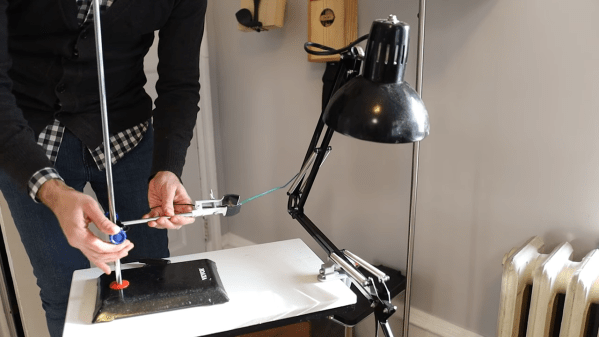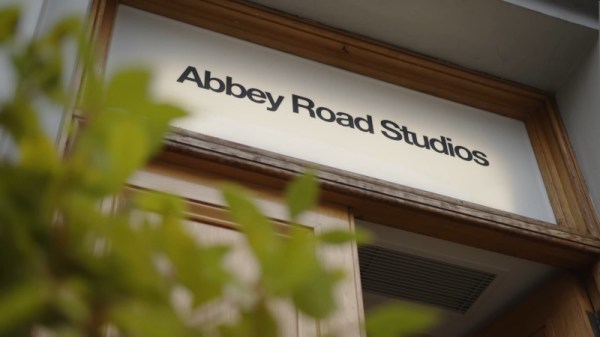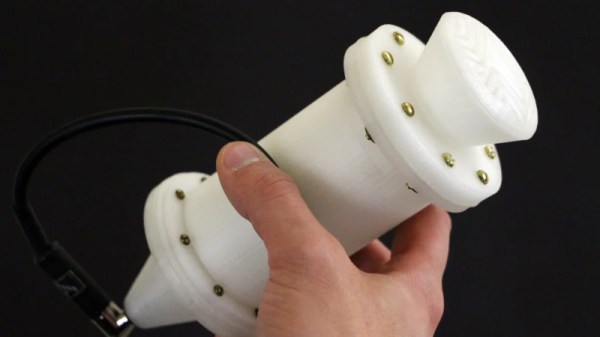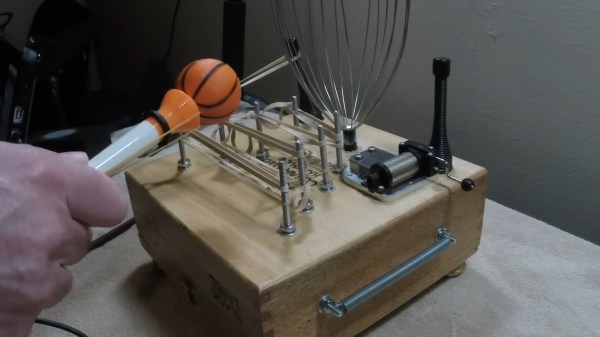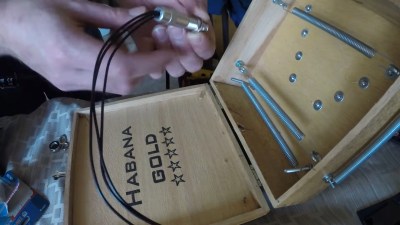If you’re a musician and you want a reverb effect, there are lots of ways to go about it. You can use software plugins, all kinds of rack-mount effects, or pedals. Or, as [David] has done, you could go with a lamp.
[David’s] build is straightforward enough in concept—he just chose a relatively unconventional item to use as a reverb tank. The lamp might seem like an odd choice, but it actually does a decent job at resonating because of its metal construction and the multiple springs that tension the structure. [David] turns the lamp into a reverb by fitting it with a Vidsonix Ghost audio transducer to put sound into the structure—picture the magnetic driver of a loudspeaker without the cone fitted, and you get the idea. Piezo elements were then used as contact mics to pick up reverberations from the lamp itself. Everything was assembled with a bunch of lab stands that give the build a rather nice aesthetic. The reverb time isn’t particularly long, but the sound is hauntingly beautiful.

